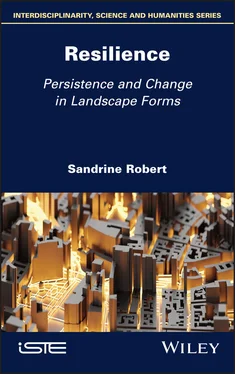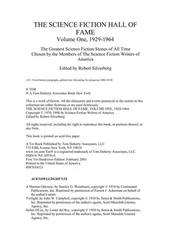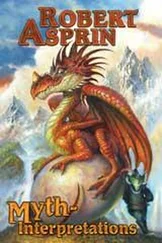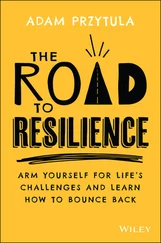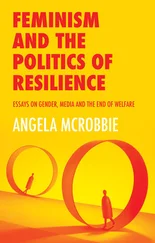1 Cover
2 Title Page Series Editor Denise Pumain
3 Copyright First published 2021 in Great Britain and the United States by ISTE Ltd and John Wiley & Sons, Inc. Apart from any fair dealing for the purposes of research or private study, or criticism or review, as permitted under the Copyright, Designs and Patents Act 1988, this publication may only be reproduced, stored or transmitted, in any form or by any means, with the prior permission in writing of the publishers, or in the case of reprographic reproduction in accordance with the terms and licenses issued by the CLA. Enquiries concerning reproduction outside these terms should be sent to the publishers at the undermentioned address: ISTE Ltd 27-37 St George’s Road London SW19 4EU UK www.iste.co.uk John Wiley & Sons, Inc 111 River Street Hoboken, NJ 07030 USA www.wiley.com © ISTE Ltd 2021 The rights of Sandrine Robert to be identified as the authors of this work have been asserted by her in accordance with the Copyright, Designs and Patents Act 1988. Library of Congress Control Number: 2021948134 British Library Cataloguing-in-Publication Data A CIP record for this book is available from the British Library ISBN 978-1-78630-666-1
4 Acknowledgments
5 Introduction
6 PART 1 Landscape: Continuity and Transformation
Introduction to Part 1 1 Landscape: The Resistance of the Past?1.1. The past in the present 1.2. Change, an eternal constant? 1.3. Reversible time 2 Landscape: A Past… Surpassed? 2.1. A visual revolution 2.2. A stratified landscape 2.3. The synchronic view 2.4. Conclusion 3 Landscape: The Articulation of Past, Present and Future 3.1. The 1990s: a period of revival 3.2. The inversion of time 3.3. Discovering new forms 3.4. Landscape as a self-organized system 3.5. Organizing principles in plot layout and road networks 3.6. Forms in a landscape: specific temporalities 3.7. Conclusion
7 PART 2 Resilience: A Tool for Understanding the Dialectics of Persistence and Change Introduction to Part 2 4 Ecological Resilience as a Systemic Property of Social-ecological Systems 4.1. The roots of resilience 4.2. Resilience versus stability: the dynamic role of perturbations 4.3. A dynamic approach to organization: the adaptive cycle 4.4. The panarchy model 4.5. Alternative attractors and transitions in complex systems 4.6. Conclusion 5 Resilience and Spatial Systems 5.1. Pre-2005: the first appropriations of resilience in archeology and geography 5.2. New developments and critical approaches after 2005 5.3. Conclusion 6 The Conceptual Framework of Ecological Resilience: A Long-term Approach6.1. The conceptual framework of ecological resilience: points for discussion 6.2. The benefits of the long-term perspective 6.3. The cultural landscape: a field of heuristic experimentation 6.4. Transitions in settlement systems 6.5. Conclusion
8 PART 3 Synthesis: Landscape as a Resilient Social-ecological SystemIntroduction to Part 3 7 Landscape: An Integrated System of Societies and Environments 8 Landscape as a Complex Adaptive System 8.1. Landscape emergence as a system: key concepts 8.2. Maintenance and reproduction of landscapes as systems: key concepts 8.3. Temporalities of resilience in a landscape: key concepts 8.4. Transitions in landscapes: key concepts 8.5. Reorganization in a landscape: key concepts 8.6. The articulation between persistence and change in a landscape: key concepts 8.7. Temporalities of reorganization in landscape: key concepts 8.8. Conclusion: summary and directions for further investigation
9 Conclusion
10 References
11 Index
12 End User License Agreement
1 Chapter 1 Figure 1.1. Reproduction of an ancient centuriation plan near Bologna, studied b... Figure 1.2. Palimpsest as accumulation. The palimpsest came to be used as a meta... Figure 1.3. Theoretical illustration of the decay of a centuriated cadastral sys... Figure 1.4. Diachrony in landscape forms. The present landscape is seen as an ac...
2 Chapter 2 Figure 2.1. Aerial photograph of the citadel at Zebed in 1938 by Antoine Poideba... Figure 2.2. Indications of prehistoric archeological features (earthworks, tumul... Figure 2.3. Plan of the traces identified by O.G.S. Crawford in the course of hi... Figure 2.4. Example of a medieval ridge-and-furrow system underneath the present... Figure 2.5. Plants located directly above archeological remains receive more or ... Figure 2.6. Crop marks showing traces of funerary structures: in this case, crem... Figure 2.7. Erasure in the palimpsest metaphor. Beginning in the second half of ... Figure 2.8. Example of stratigraphic interpretation, applied to landscape forms....Figure 2.9. Synchrony in landscape forms. Landscape is reorganized in a manner s...
3 Chapter 3Figure 3.1. The systemic approach in archeogeography as promoted by Chouquer (19...Figure 3.2. In Marines (Val-d’Oise, France), the relative stratigraphy approach ...Figure 3.3. In Pierrelatte, there has been a boundary on the same site from anci...Figure 3.4. Example of a compiled map of the town of Marines (Val-d’Oise). Trace...Figure 3.5. River corridor on the site of a paleomeander in the river Seine on t...Figure 3.6. Example of a formation network around the town of Beaugency, France ...Figure 3.7. Influence of the bed of a former meander of the Seine on the orienta...Figure 3.8. Resilience of the river corridor of a paleomeander of the Seine on t...Figure 3.9. Sections of streets created by private investors in the 18th and 19t...Figure 3.10. Articulation and extension of road layouts of medieval, modern and ...Figure 3.11. Grouping of multiple road and path layouts on the route from Alican...Figure 3.12. Morphogenetic role of topographical elements on the road network. T...Figure 3.13. Flooded fields in Maffliers (Val-d’Oise), January 2001. Elements in...Figure 3.14. The three dimensions of landscape elements: flow, ground footprint ...Figure 3.15. Feedback loops connecting flows (circulation), ground footprints an...Figure 3.16. In Marines, an old section of path was “resurrected” for regional c...Figure 3.17. Cergy: development of a new bridge on the site of a long-forgotten ...Figure 3.18. Resilience of the Paris-Rouen route in the Val-d’Oise. Flow establi...Figure 3.19. The three spatial and temporal dimensions of road networks. Traffic...Figure 3.20. Non-linear temporalities and uchrony in landscape forms. Any form i...Figure 3.21. Different ways of representing time. The spiral form can be used to...
4 Chapter 4Figure 4.1. Representation of the numerical evolutions of two interdependent pop...Figure 4.2. Illustration of the notions of attractors and basins of attraction. ...Figure 4.3. Representation of a stability landscape featuring two basins of attr...Figure 4.4. One of the first representations of the adaptive cycle, with the fou...Figure 4.5. The most common current representation of the adaptive cycle, in the...Figure 4.6. Representation of panarchy, articulating three levels of adaptive cy...Figure 4.7. Representation of panarchy articulating two levels of adaptive cycle...Figure 4.8. Another way of representing panarchy (Pa): “The fourth aspect of res...Figure 4.9. Interpretation of the four main phases of development in the Florida...Figure 4.10. Proposed representation of panarchy in the Everglades case study by...Figure 4.11. Shifts between two alternative stable states in the case of a heati...Figure 4.12. “Marble-in-a-cup” representation of stability properties at five di...
5 Chapter 5Figure 5.1. Intersystemic times. Phases of systemogenesis (SG) mark the emergenc...Figure 5.2. Occurrences of the term “resilience” in four main French geography j...Figure 5.3. Number of articles using the term “resilience” in Les Nouvelles de l...Figure 5.4. Occurrences of the term “resilience” as a percentage of total analyz...Figure 5.5. Number of documents added to the Bibliothèque nationale de France (B...Figure 5.6. Number of documents recorded in the US Library of Congress catalog f...Figure 5.7. Occurrences of the word “résilience” or “resilience” in the keywords...Figure 5.8. Distribution of 6,970 occurrences of the term “resilience” by discip...Figure 5.9. Frequency and number of occurrences of the main concepts of ecologic...Figure 5.10. Number of times the term “resilience” is cited alongside a concept ...
Читать дальше
